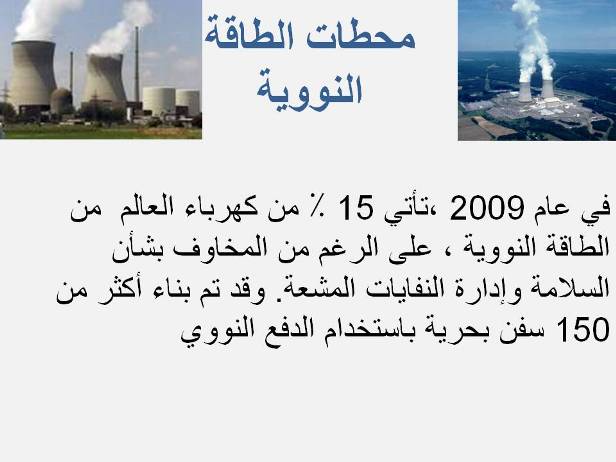| front |1 |2 |3 |4 |5 |6 |7 |8 |9 |10 |11 |12 |13 |14 |15 |16 |17 |18 |19 |20 |21 |22 |23 |24 |25 |26 |27 |28 |29 |30 |31 |32 |33 |34 |35 |36 |37 |38 |39 |40 |41 |42 |43 |44 |45 |46 |47 |48 |49 |50 |51 |52 |53 |54 |review |
 |
Nuclear power is power (generally electrical) produced from controlled (i.e., non-explosive) nuclear reactions. Commercial plants in use to date use nuclear fission reactions. Electric utility reactors heat water to produce steam, which is then used to generate electricity. Today, more than 100 nuclear power plants provide 20 percent of the electricity consumed in the United States. More than 439 reactors provide some 17 percent of the world's electricity, and about 65 more plants are under construction around the world. In 2009, 15% of the world's electricity came from nuclear power, despite concerns about safety and radioactive waste management. Nuclear fusion reactions are widely believed to be safer than fission and appear potentially viable, though technically quite difficult. Fusion power has been under intense theoretical and experimental investigation for many years. Both fission and fusion appear promising for some space propulsion applications in the mid- to distant-future, using low thrust for long durations to achieve high mission velocities. Radioactive decay has been used on a relatively small (few kW) scale, mostly to power space missions and experiments. International research is continuing into safety improvements such as passively safe plants, the use of nuclear fusion, and additional uses of process heat such as hydrogen production (in support of a hydrogen economy), for desalinating sea water, and for use in district heating systems. |